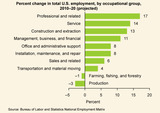
- Subject:
- Social Science
- Sociology
- Material Type:
- Module
- Author:
- OpenStax College
- Date Added:
- 07/18/2021


Explain how socialization occurs and recurs throughout lifeUnderstand how people are socialized into new roles at age-related transition pointsDescribe when and how resocialization occurs

Understand the difference between psychological and sociological theories of self-developmentExplain the process of moral development

Understand the importance of socialization both for individuals and societyExplain the nature versus nurture debate


Understand the sociological concept of reality as a social constructDefine roles and describe their places in people’s daily interactionsExplain how individuals present themselves and perceive themselves in a social context

Describe Durkhiem’s functionalist view of societyUnderstand the conflict theorist view of societyExplain Marx’s concepts of class and alienationIdentify how symbolic interactionists understand society

Describe the difference between preindustrial, industrial, and postindustrial societiesUnderstand the role of environment on preindustrial societiesUnderstand how technology impacts societal development

Define and describe the scientific methodExplain how the scientific method is used in sociological researchUnderstand the function and importance of an interpretive frameworkDefine what reliability and validity mean in a research study

Understand why ethical standards existDemonstrate awareness of the American Sociological Association’s Code of EthicsDefine value neutrality


Differentiate between four kinds of research methods: surveys, field research, experiments, and secondary data analysisUnderstand why different topics are better suited to different research approaches

Understand types of economic systems and their historical developmentDescribe capitalism and socialism both in theory and in practiceDiscussion how functionalists, conflict theorists, and symbolic interactionists view the economy and work

Define globalization and describe its manifestation in modern societyDiscuss the pros and cons of globalization from an economic standpoint


Describe the current U.S. workforce and the trend of polarizationExplain how women and immigrants have changed the modern U.S. workforceUnderstand the basic elements of poverty in the United States today

Sal introduces the famous and super important Pythagorean theorem! This lesson includes an introduction video followed by examples and practice problems involving finding the hypotenuse, finding a side, finding area of an isosceles triangle, and determining if a triangle is a right triangle. It is followed by a unit on Pythagorean theorem applications.

Up to this point in Grade K, students have worked intensively within 10 and have often counted to 30 using the Rekenrek during fluency practice. This work sets the stage for this module where students clarify the meaning of the 10 ones and some ones within a teen number and extend that understanding to count to 100.
**NOTE: The New York State Education Department shut down the EngageNY website in 2022. In order to maintain educators' access, nearly all resources have been uploaded to archive.org and the resource links above have been updated to reflect their new locations.**

Module 1 of the Kindergarten curriculum in A Story of Units. In Topics A and B, classification activities allow students to analyze and observe their world and articulate their observations. Reasoning and dialogue begin immediately. In Topics C, D, E, and F, students order, count, and write up to ten objects to answer how many? questions from linear, to array, to circular, and finally to scattered configurations wherein they must devise a path through the objects as they count. In Topics G and H, students use their understanding of relationships between numbers and know that each successive number name refers to a quantity that is one greater and that the number before is one less.
**NOTE: The New York State Education Department shut down the EngageNY website in 2022. In order to maintain educators' access, nearly all resources have been uploaded to archive.org and the resource links above have been updated to reflect their new locations.**

A compendium of stories about labor history in Connecticut